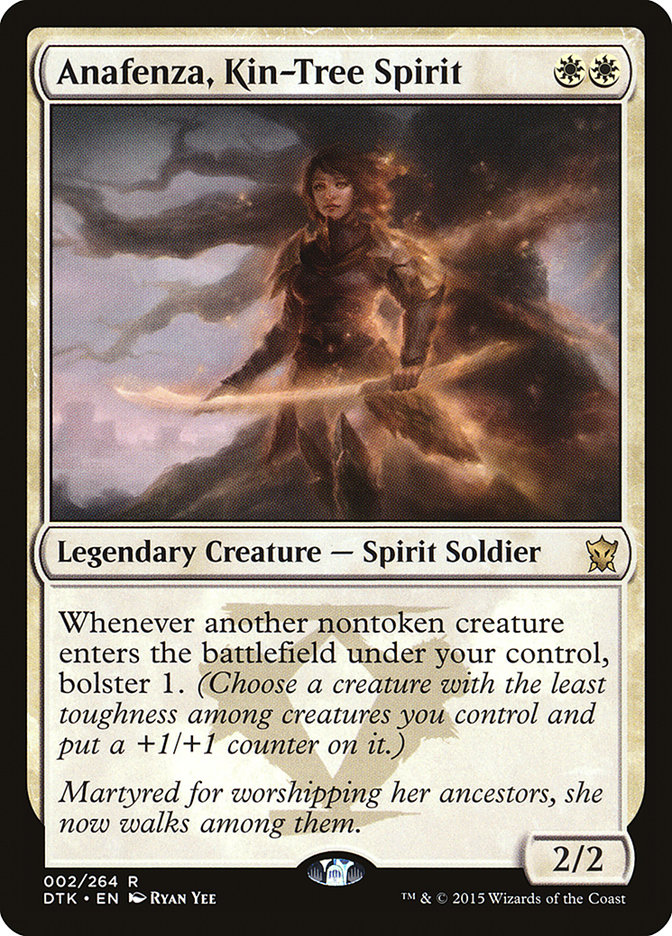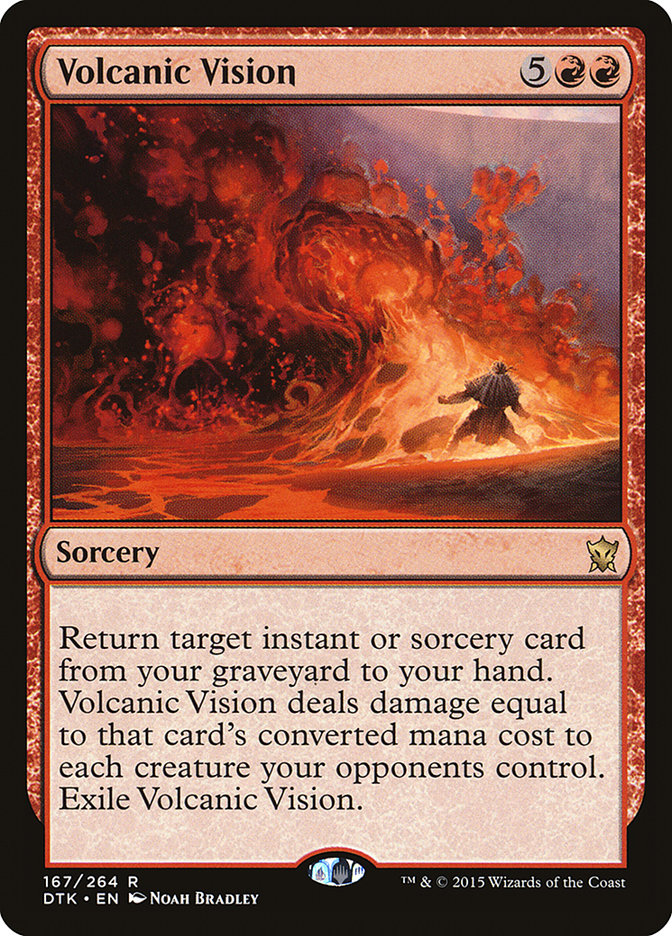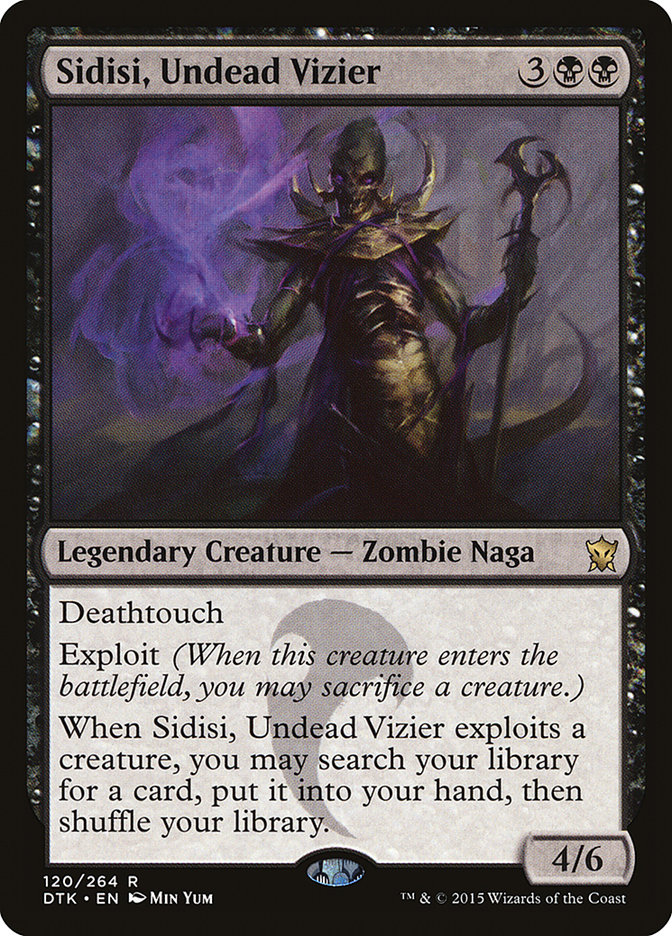I’m back home after my wild and crazy road trip. Online, I’ve been calling it the
#Quest4Platinum, and it is basically the travelogue of my attempt to acquire the 14 Pro Tour Points I’ll need to be Platinum after the next Pro
Tour in Vancouver.
It was about 3,000 miles of driving (literally), and now that I’m home, I have to say I’m still in recovery. The trip wasn’t a total loss for my goals, but
it was certainly a little disappointing. How far did I get towards my goal? In both events I finished in Day Two, but not remarkably so. I finished by
adding one Pro Tour Point. It could have gone better, and it certainly could have gone worse. In the end, I’m at that stage where literally every Pro Tour
Point has a real impact.
I got that one point, not in Standard with my U/B Control deck, but in Limited in Atlantic City. When I got my pool for the Sealed Deck portion of the
event, I was disappointed, but I felt like I still had what it took to make something of it. When I finished (barely) in Day Two, I knew I had to 6-0 to be
able to Top 8, and yet I didn’t feel like that was unachievable.
Getting to know Limited formats is the same as getting to know Standard or Modern or any other format. It takes time and effort, but there are things you
can learn that will help you understand formats and improve. Not everyone’s process works exactly the same, but here are some of the things that I do to
excel in Limited.
1 – Thoroughly Learn All of the Cards
It should go without saying that you need to thoroughly learn all of the cards. There is absolutely nothing wrong with needing to read a card when you’re
playing someone in a tournament, but you should truly know about the existence of every single card out there.
In Khans of Tarkir Limited, it is critically important to know the morph cost for every single creature, just as it is important to know the
megamorph cost for every creature in Dragons of Tarkir now. You need to know what tricks are available and how common those tricks are so you can
gauge your certainty of danger in certain situations. You need to know what the powerful cards are in any particular color combination so that you can
guess what an opponent might have in their 40 cards.
The means that you use to accomplish this can be varied; all of us learn in slightly different ways. My method is more intense than many use, but I think
it is effective. As a set is beginning to get spoiled, I visit a spoiler site and read every card that is spoiled. If you were to look at the Magic Origins spoiler today, you’d see a pretty short list:
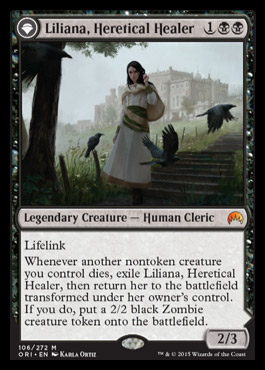
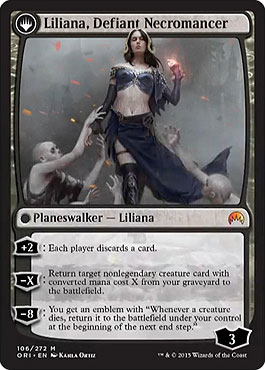
Technology is our friend, and so via RSS feeds, I can find out when new cards are spoiled. On any day that new cards are spoiled, I go back to the spoiler
and read all of the cards, even the cards I’ve already read. My goal is to keep rereading the cards and re-contextualizing them. If I look at a
card like the upcoming Liliana, I might form an opinion about her in a vacuum. However, as the spoiler reveals itself, more and more cards can influence
that feeling, and I’m not only looking to learn all of Liliana’s text, but to have a couple of different ideas of how to view it.
Some cards don’t really inspire this kind of revision. When I look at Banefire, for example, even without knowing about the context of counterspells or
damage prevention in Modern Masters 2015, my opinion of the card doesn’t change much. It’s Banefire.
As the spoiler season comes to a close, at a certain point I’ve looked at some number of cards dozens, if not more times. I’ve started to internalize the
cards. That’s the place you want to get to. If this takes flash cards, use flash cards; the point is to really feel them internally. To hammer this home
fully, I even go further, literally typing out the full spoiler myself into a unified Standard Spoiler, to both have a single document that has all of
Standard on it, and to get even more reinforcement of what those cards are. I’m not suggesting everyone do this, but it certainly helps me.
2 – Play With the Cards
After this, though, most people still haven’t fully realized the ramification of their cards. Little things can be easy to miss until you actually miss
them in game play.
Take the new Anafenza. I had one opponent in a local draft who tried to bolster when they put a token in play. It says it right on the card, but they
hadn’t internalized it yet, and so they made that mistake.
I, notably, made a huge mistake at Pro Tour Dragons of Tarkir simply because I hadn’t seen the interaction of certain cards happen yet.
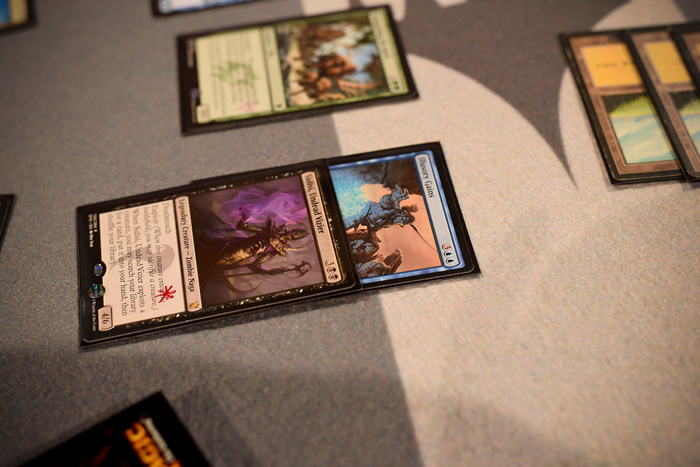
In round three versus Ari
Lax, I let Ari use my own Sidisi, Undead Vizier as a personal tutor for him. I knew exactly what Illusory Gains did, but I hadn’t seen
its interaction with exploit yet, and my mistake could have cost me that game. Thankfully, my deck was so good that Ari using my own Sidisi to tutor for
his best card wasn’t sufficient to win.
If I had played enough games, perhaps I could have learned this when so much wasn’t on the line.
3 – Think Through All Possible Builds
Time constraints are a real thing in deck construction, so you don’t have an unlimited resource that you’re working with here. But just because a deck is
obvious, it doesn’t mean that that is the deck you want to build. Take my sealed deck from Grand Prix Atlantic City. After going through the deck, I could
see two possible builds:
Creatures (19)
- 1 Festering Goblin
- 1 Jeskai Sage
- 1 Jeskai Infiltrator
- 1 Marang River Prowler
- 1 Sultai Emissary
- 1 Sibsig Host
- 1 Mistfire Adept
- 1 Sidisi, Undead Vizier
- 1 Silumgar Butcher
- 1 Marang River Skeleton
- 2 Ruthless Deathfang
- 1 Dutiful Attendant
- 1 Zephyr Scribe
- 1 Gurmag Drowner
- 1 Monastery Loremaster
- 1 Silumgar Sorcerer
- 2 Sidisi's Faithful
Lands (18)
Spells (3)

Creatures (14)
- 1 Summit Prowler
- 1 Goblin Heelcutter
- 1 Mardu Woe-Reaper
- 1 Sprinting Warbrute
- 2 Warbringer
- 1 Dragon Hunter
- 1 Herald of Dromoka
- 1 Kolaghan Aspirant
- 3 Lightwalker
- 1 Strongarm Monk
- 1 Screamreach Brawler
Lands (17)
Spells (9)

It would be easy to see the exploit deck and just build it and be done, or it would be easy to see the aggressive deck and just build it and be done.
Instead, though, you should always take your time to go through what all of the possibilities are so that you don’t miss a potential build.
In the case of this sealed pool, I had a real struggle in the end to decide which deck to register. I ended up registering the R/W deck; more on that in a
moment.
4 – Talk to People (and Listen to Them)
I’m fortunate that I have some teammates who are great Limited players. At the Grand Prix, I showed the pool to several of my teammates and got some great
feedback from Ben Stark and Sam Black on them. Ultimately, they convinced me that the U/B deck was a better deck than the R/W one.
“You went with your comfort zone, didn’t you?” asked Sam.
He was right. I had. The decks felt close enough that I decided to register the R/W list even though I thought it might have less high-quality cards in a
vacuum. I felt that the difference in power was very slight, and, if nothing else, if I was going to board into one deck from another, I’d rather start as
the R/W deck and switch into the U/B one.
Ben and Sam together made me feel that the power levels were different enough that the U/B deck was simply better.
Now, I’m very privileged to have such talented teammates, but unless you are completely playing in a vacuum, you do have friends and colleagues in the game
whose opinion you can ask. So do so!
This isn’t a time to try to get into a fight. This is a time to try to listen and learn. Make sure to have a discussion rather than be trying to “win” a
point. Your goal here is to try to get the best of all possible perspectives on your deck, so anyone who is contributing is doing you a favor. Treat it as
such. Ultimately, you’ve already registered the pool you’re working with, but it can help you think about how to sideboard for game 2 or game 3, and you
can try to improve for your next Limited event.
5 – Create Opportunities to Learn
There are always opportunities to learn when you’re playing Magic. When you’re playing in low-stake events, this is a great chance to try things out and
experiment.
Take, for example, this card:
Early on the first day that I drafted Dragons of Tarkir, someone had taken this card. It didn’t work out all that well for them, but still, it was
interesting. On paper the card looked powerful, so I was curious how the card was performing for people. By the time I drafted it in a Grixis deck, several
people had had it, none of whom had any great experiences with it. I put it in, and it was disappointing. But it showed promise.
The next time it showed up in a pack one, I nabbed it.
Here was that deck:
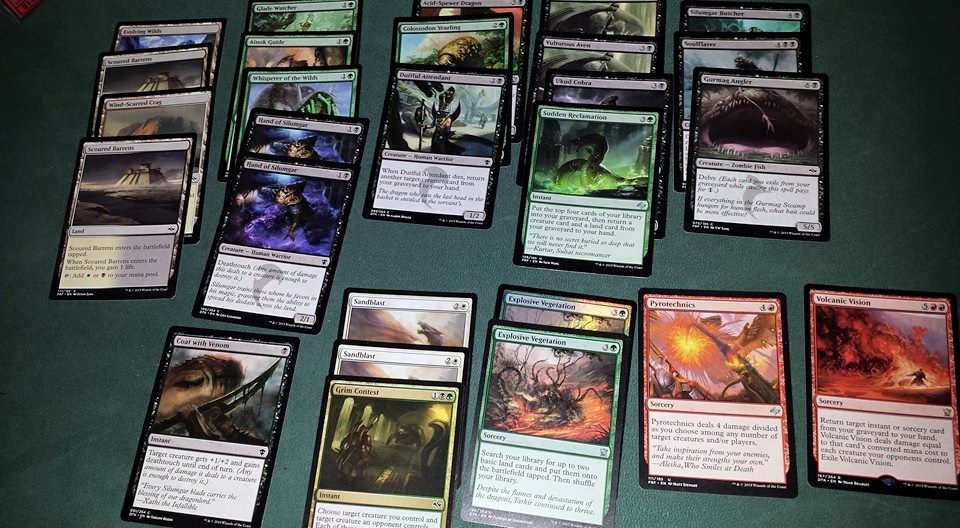
In that draft, no one went undefeated, but I went 2-1, and Volcanic Vision was absolutely incredible. Between online and in person, I would draft Volcanic
Vision three more times, and it was an absolutely insane card each time, so long as you had the tools to make it work: sufficient targets (especially
Explosive Vegetation), lots of other removal, high toughness creatures, sufficient finishers, and at best, decent card draw/selection.
In my second draft at Grand Prix Atlantic City, I first picked Sidisi, Undead Vizier, who, I guess, is my new best friend in Limited. My second pick was
full of options, but one of them was Volcanic Vision. I did a lot of soul searching, but I decided that with Sidisi and Volcanic Vision, I could draft
around it. So that’s what I did.
Later in conversation with Chris Fennell, I said, mostly in jest, partly to troll him, and partly in truth, “the deck was open, so I drafted it.” It got a
lot of laughs, but I was actually very happy with my deck.
Here it is:
Creatures (10)
- 1 Daghatar the Adamant
- 1 Whisperer of the Wilds
- 1 Arashin War Beast
- 1 Sidisi, Undead Vizier
- 1 Scaleguard Sentinels
- 1 Deathbringer Regent
- 1 Conifer Strider
- 3 Segmented Krotiq
Lands (17)
Spells (13)

I went 3-0 with this deck. It looks wonky, but this is deck is actually quite good, but I doubt I would have been able to draft it at all if I hadn’t
already explored out this archetype based entirely on a rare situation.
6 – Always Be Questioning
With my Veggies/Vision deck (“the three wrath deck,” some joked), I had one opening hand that I mulled over for some time before deciding to keep it on the
draw. Here it is:
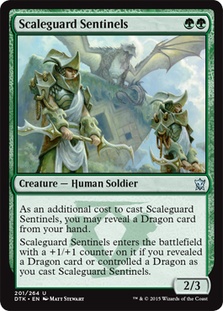
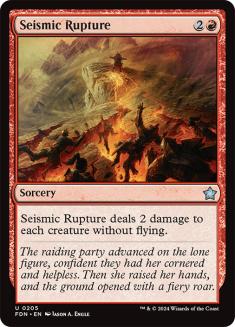
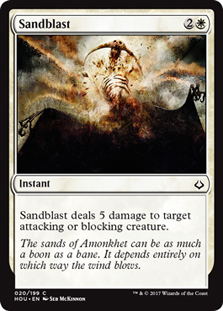

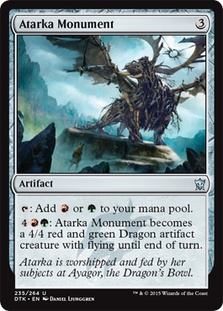
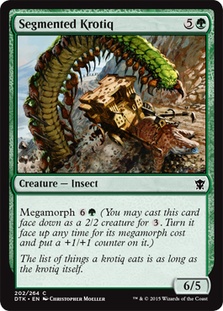
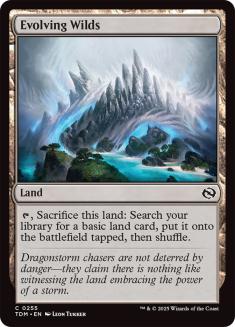


This is actually a very difficult question of whether to keep or not. My opponent had already shown me Fate Forgotten and their deck was a fairly
aggressive B/W deck; this means I know I can’t rely on Atarka Monument to fix my mana, but they could come out of the gate fast, too. Any decision I make
with Evolving Wilds can shut down a great many aspects of the deck, as well as remove a critical land from the deck when I only have seventeen total.
I talked over this situation with several people, all very good players, and we all had different ideas of what the path to take on the first few turns.
The important thing about this situation, though, is that it makes you think about how the upcoming turns might go.
The first question was whether or not to mulligan the hand. I actually think this is a hard call, but I did keep it. My first draw was…
You could open up planning on immediately finding a Forest and then dropping a second turn guaranteed Scaleguard Sentinels. The next path, I think, is to
drop the Forest, hope to draw another Forest, and if not, put Evolving Wilds into play, and then make a decision between a Plains and a Mountain. The
Plains would be a plan towards the potential of being able to cast most of your spells. The Mountain would be hedging your bets towards a Seismic Rupture
should they Fate Forgotten a future Monument.
The point, though, is to look at these moments as a means to question your decisions. This is in many ways a combination of the last two points, but I
bring it up because we have these moments when we play Magic all of the time. You need to have the mindset that you could potentially find a better choice
if you’re going to approach the game in such a way that helps you find it. If you already think you made the best choice without having questioned it in
the first place, you’re going to miss that chance to learn, and thus get better.
Next
For me, my #Quest4Platinum continues. I’m planning on hitting Grand Prix in
Las Vegas, Charlotte, Providence, and Montreal (and I might consider Buenos Aires, but that would take a lot).
With the imminent release of Modern Masters 2015, I know I’ll be taking a big look at that set in hopes of an amazing finish at the history-making
Grand Prix in Vegas. I definitely am going to continue to use all of these principles during my adventures there. After that is Charlotte, where the format
is Modern – a format I haven’t touched since Pro Tour Fate Reforged prep was foremost on my mind. I’m definitely hoping I can find a broken deck for that
event, but I’ll certainly be focusing on Limited first.
Wish me some luck in all of those events. If you’re playing in any Limited events, remember that preparation and the right mindset in how you approach any
Limited format takes just as much rigor as it does in Constructed. If you want to succeed, make sure you apply the same kind of effort.


